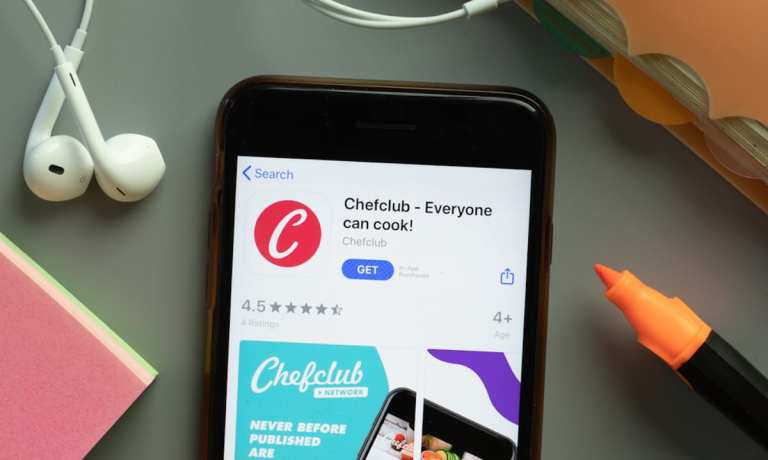Chefclub Taps Into Social Content To Spark D2C Demand

Chefclub, a food media company that made a name for itself with its highly shareable recipe videos, is parlaying its playful, quirky content brand into food-centric merchandise. Last month, the startup raised $17 million to fund the expansion of its product line, according to TechCrunch, helping the company move into selling cookware and consumer packaged goods (CPG). After the success of the company’s first forays into direct-to-consumer (D2C) commerce, with its 2018 cookbook and its 2019 children’s cooking set, Chefclub is looking to both extend its D2C offerings and get its products on store shelves. And at the core of every new product is the brand identity popularized through its recipe videos.
“The first contact people have with our brand is the videos we share on social media, which generate millions of views while showcasing our products,” Chefclub CEO and Co-founder Thomas Lang told PYMNTS in an interview, adding that Chefclub uses these videos to encourage consumers to engage more deeply with its offerings. “People are looking for experiences, not only for products, and that’s how Chefclub exists and differentiates itself in the market.”
Given the relationship that Chefclub has built with its base in the last five-odd years, garnering over 100 million followers across social media channels, it has a unique opportunity to respond directly to its consumers’ tastes. “The first product we developed, a cookbook, is — as are all the other [products] we developed after — the result of a demand from our community,” Lang noted.
The book sold over 50,000 copies via pre-order, and Chefclub has since sold more than 700,000. This success is due in part to the company’s head start in the D2C space, Lang pointed out. It uses its well-established social media presence as free marketing, promoting the products through its popular videos. This helps Chefclub circumvent the high costs typically associated with customer acquisition in D2C commerce.
The company’s upcoming move into the CPG space, with its new line of spices, will incorporate consumer input while tying the product into Chefclub’s existing content suite. As Lang described it: “First, we’re co-creating the mixes of spices with our community, based on their desires, wishes and feedback. Secondly, the mixes are all paired with hundreds of Chefclub recipes.”
This strategy — connecting the products to the social media videos — is especially effective now, as more homebound consumers discover Chefclub and its offerings. Recipe videos have been a popular medium recently, offering bored-at-home consumers both entertaining content and an actionable activity to do alone or with their families. “Being a digital company in the cooking space has been a successful combination during the pandemic, and our viewership and number of followers encountered a strong growth,” Lang said. “Parents had also been looking for new ways of occupying their children at home, and Chefclub Kids’ popularity definitely benefited from this.”
Chefclub’s approach to commerce puts the content first and grows demand from there. Of course, this method demands strong content that resonates deeply with consumers. As Lang summarized, “this high-quality content we’ve been creating and distributing online for free since day one is what actually allowed us to be here today. It helped us build a strong and engaged community that trusts Chefclub and is keen to adopt all our products and services.”
In the post-pandemic future, Chefclub may look into partnering with restaurants. Lang alluded to “new opportunities, especially related to the trending dark kitchens,” adding, “we are open to all discussions and possibilities, but there’s nothing concrete right now.” So-called “ghost kitchens,” which are delivery-only restaurants that exist online without a physical consumer-facing presence, have been booming during the last year amid the pandemic.
This is a good time for D2C commerce, though the model’s post-pandemic future remains to be seen. PYMNTS’ D2C and the New Brand Loyalty Opportunity study found that 60.6 percent of consumers increased their use of online D2C channels to purchase food and beverage products during the pandemic, and 51.7 percent of consumers made CPG purchases from new brands since the pandemic’s onset. However, the study noted, the current shift’s durability will depend on brands’ abilities to deliver product availability, offer seamless eCommerce experiences and leverage digital tools to forge long-term, personalized relationships with customers.
Of course, Chefclub’s strong content suite and enduring relationship with its fans set it up well for a post-pandemic D2C future. As Lang explained, “there are thousands of people today who are willing to engage with Chefclub every day … people who are deeply emotionally attached to our brand.” This loyal following lays the foundation for all of the company’s ventures: “All of our initiatives, products and projects are created hand-in-hand with our community.”